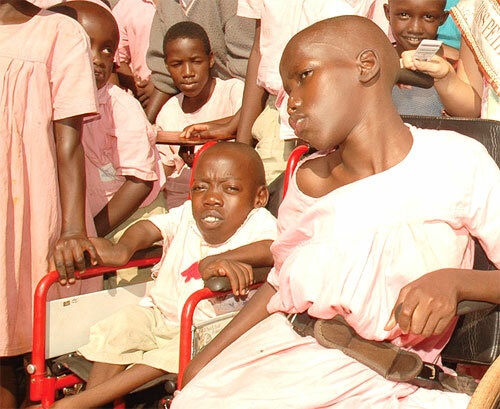Value children with disabilities
Jun 18, 2012
According to the Uganda national household survey 2005/2006 29.6 million people have a disability. The survey also shows that 40% of older persons in Uganda have a disability.

Children with disabilities are viewed as a shame to families
By Catherine Tamale
According to the Uganda national household survey 2005/2006 29.6 million people have a disability. The survey also shows that 40% of older persons in Uganda have a disability.
According to the Uganda population and housing census 2002 90% of children with disabilities do not go beyond primary education. While Only 2.2% of children have attained post-secondary education and 60% of people with disabilities have not received any rehabilitations.
According to the report by the human rights commission, Universal Primary Education has had the most impact on access to education for persons with disabilities. It was, however, observed that the policy framework lacks an effective monitoring mechanism to ensure that children with disabilities are in school.
The other challenges regarding the enjoyment of the right to education by the children with disabilities was lack of accessible structures and sufficient teaching facilities (Braille books and typewriters) and resources for the children with disabilities special needs.
Although there is a developed disability legal framework and systems, through which affirmative action could benefit disabled people, only limited implementation has been possible. This has been primarily due to inadequate skills by leaders of persons with disabilities to influence policies effectively to benefit persons with disabilities.
Another problem is the performance gaps within the delivery system and lack of
inclusion of persons with disabilities’ needs within the systems of budgeting, allocation and provision of services at the district and in the LC system.
By Joel Ogwang
ON any scale of ability, they are as competitive as any other child; their only inability lies in their blindness and deafness. And, for a visitor at the Ntinda based Uganda School for the Deaf, there is much more to appreciate, than academics.
Their hospitality and activism is great. “Our pupils are very disciplined and humble, even better than most normal children,” says Samalie Nanvunanwa, an English teacher.
At the school, pupils are armed with conventional primary education as well as pre-vocational skills in carpentry, mat-making, cookery, knitting, weaving, hand-sewing, tailoring, art and design, crocheting, bakery and home science.
With three computers, pupils also get computer training. The school for the deaf, arguably, the only one of its kind in central Uganda, graduates between 35 to 40 students, on average, annually. It enrolled 13 deaf and blind students this year.
The pupils communicate using sign-language, a non-verbal communication involving gesturing using hands, eyes, the face, mouth and body. “Their talents compensate for their academic weaknesses,” says Jackson Mbuusi the head teacher and audiologist.
“Some of our pupils are employed in supermarkets and banks. Others are recruited as drivers.” The school receives 3% of its funding from the Government under the UPE scheme and subvention Grant (73%) and local and international well-wishers contribute (24%). A pre-school/ nursery programme has been introduced for three-year old learners so as to develop their language and self-expression skills.
Pupils are first assessed by Ear, Nose and Throat (ENT) doctors in government hospitals, before enrolment in pre-school to introduce them to basic sign language.

Children from the Kampala school of the hand-capped
Late starters over the age of 12 or the deafened are admitted into special classes meant to meet their needs. For its excellence in handling the deaf and blind children, the school emerged in the 2011 Guinness book of records for taking part in sign health’s exercise.
The school had the most people gesturing and singing simultaneously in multiple venues.
And, in 2012, the school picked the 2nd runner-up trophy for the environment competitions in Kampala. Uganda has about 3. 3 million deaf people, yet only 10% of children with hearing impairments are enrolled for primary education.
“Parents don’t support deaf and blind children enough,” says Musoke. “They have low- expectations of them, which makes educating them difficult.”
